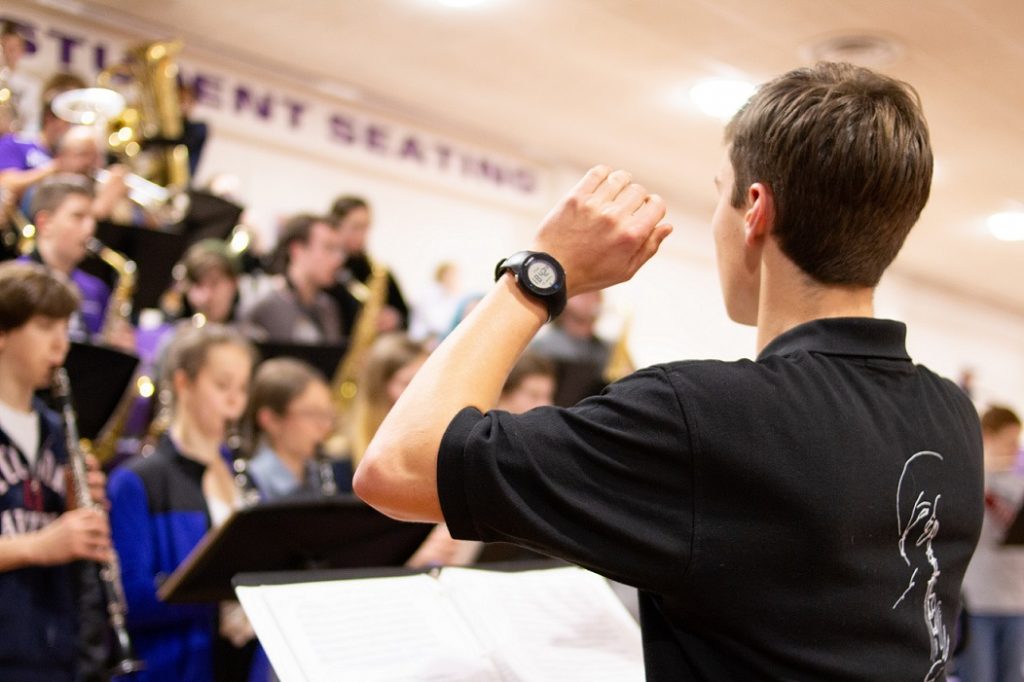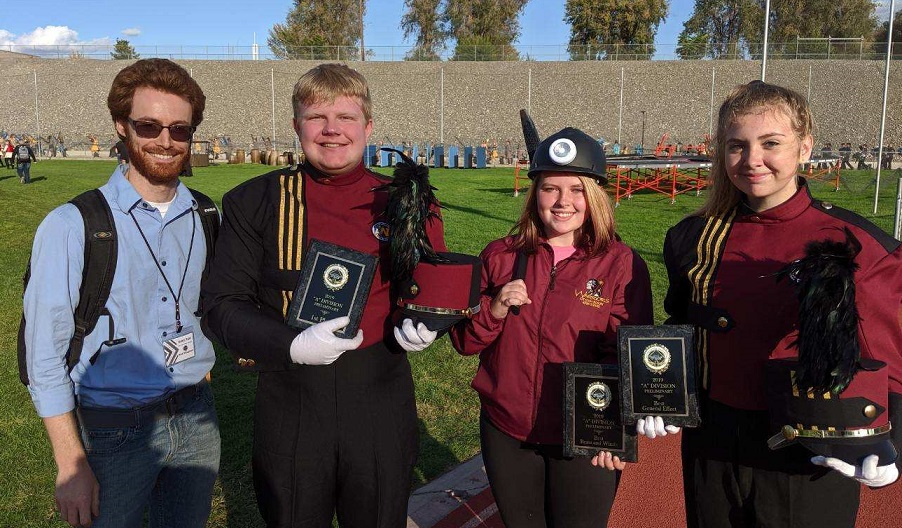Updated: How to Get ESSER (CARES, CRRSA, ARP) Funding for Your Music Program
ESSER funding for education is available through the CARES Act and American Rescue Plan (ARP). Learn more about these special grant funds.
UPDATED: July 10,2023
There have been many rumors that all ESSER funds have been spent or the funds have been pulled back due to the debt-ceiling legislation that Congress passed in May 2023. These statements are not true.
Below, we have compiled resources from arts organizations and federal government websites. The purpose of federal education funding is to promote fairness among various communities and aid in increasing the availability of exceptional music and arts programs for a greater number of students. Your ongoing support and advocacy play a crucial role in advancing this endeavor!
Important Links
ESSER Funding Toolkit 2023 — COVID Relief Funding in the Music Classroom: An updated resource from the National Association for Music Education (NAfME) that provides tools to initiate conversations with your administrators about the remaining ESSER funds.
The Education Stabilization Fund Transparency Portal: This website provides a transparent view into federal COVID relief funds (ESSER, GEER, EANS and HEER). It shows how much funding was allocated to school districts and the amount of remaining funds.
Elementary and Secondary School Emergency Relief Fund (ESSER): The Department of Education has compiled ESSER resources on this page. (Updated 5/17/23)
In addition to ESSER funds, there are many federal programs that can be used to support music education. The links below provide information about block grants and other federal programs to help support music education.
- Federal Funds Can Be Used for Music Education: This webinar, hosted by the National Association of Music Merchants (NAMM) Foundation, discusses federal funds (Title IV Part A, SSAE, Title I and Title II) and provides success stories to expand opportunities for all students.
- REPORT — The Impact of Federal Funds on Music & Arts Education, 2022 Survey: NAfME, in collaboration with the NAMM Foundation, the Educational Theatre Association (edTA), the National Dance Education Organization (NDEO) and the National Art Education Association (NAEA), conducted an informal survey to collect data about the use of federal funds to support music and the arts (dance, theater and visual arts) during the 2021–22 school year.
UPDATE FROM DECEMBER 20, 2021: On June 14, 2021, the U.S. Department of Education began releasing state plans on how each state will use their ESSER III funds to support schools, students and educators. The state plans are required for states to receive the final third of their allocated ESSER III funds. As of today, 50 states and the District of Columbia have submitted their plans.
UPDATE FROM JUNE 4, 2021: On May 26, 2021, the U.S. Department of Education (DOE) released a Frequently Asked Questions (FAQ) on ESSER and GEER funds.
This document helps educators justify how and why they can access these funds for their program. It is important to note that for the first time, the DOE states that ESSER funds can be used to implement or expand music programs, which includes purchasing instruments.
Don’t forget, if you receive ESSER funds, please email us and tell us your success story.
UPDATE FROM May 5, 2021: The American Rescue Plan (ARP) was signed into law on March 11, 2021. This COVID relief bill extends or modifies several provisions in the Coronavirus Aid, Relief and Economic Security (CARES) Act that was passed in March 2020 and the Coronavirus Response and Relief Supplemental Appropriations Act (CRRSA) that was passed in December 2020.
The new relief bill authorizes $168 billion for the Education Stabilization Fund. The bulk of that funding falls under Elementary and Secondary School Emergency Relief (ESSER III), which will receive an additional $122 billion on top of the $54 billion (ESSER II) and $13 billion (ESSER I) that was allocated in the previous acts.
Important Links
- Use of ESSER Funds, a resource from the Nebraska Department of Education
- American Rescue Plan Act Fact Sheet, including a comparison of all three ESSER funds
- ESSER III Allocations, a list of funding available to each state
- Additional information about ESSER III from the from the Office of Elementary and Secondary Education
- ESSER I, II and III Funding Estimates
- This Funding Resource Guide Handout points you to articles and additional information about federal funds for music education.
- Give a Note Foundation posted this blog about How to Get ESSER Funds for Your Music Program
- Emergency Assistance to Non-Public Schools (EANS) Program
Educator Success Stories
UPDATE FROM February 25, 2021: The Coronavirus Response and Relief Supplemental Appropriations Act (CRRSA) was signed into law on Dec. 27, 2020. This new COVID relief bill extends or modifies several provisions in the Coronavirus Aid, Relief and Economic Security (CARES) Act that was passed in March 2020.
The new relief bill authorizes $81.9 billion for the Education Stabilization Fund. The bulk of that funding falls under Elementary and Secondary School Emergency Relief (ESSER II to differentiate it from the original K-12 funding under the CARES Act), which will receive an additional $54 billion on top of the $13 billion that was allocated under ESSER in March 2020.
ESSER II funds cannot be used until original ESSER funds are spent. ESSER funds are still available — check out this dashboard of ESSER funding that has been allocated and spent by each state and territory.
ESSER II funds must be spent within one year of allocation. All ESSER II funds must be spent by Sept. 30, 2023.
Important Links
- ESSER II Fact Sheet
- ESSER II Allocations, a list of funding available to each state.
- Additional information about ESSER and ESSER II funding from the Office of Elementary and Secondary Education
- Information about education funding in the new Covid-19 relief package from National Association for Music Education (NAfME)
- COVID Relief Funding in the Music Classroom from NAfME
Below is the original article about the CARES Act.
Get CARES Act Funding for Your Program
We are living in challenging and unprecedented times, requiring intervention from the federal government. On March 27, the Coronavirus Aid, Relief and Economic Security (CARES) Act was passed. Last week, the U.S. Department of Education announced that $30.75 billion of the CARES Act will be distributed through four grant programs to address the impact of COVID-19 on students, K-12 schools and higher education institutions. This allotment is new grant money and not part of Title IV-A or other grant programs.
Only one of the CARES Act grant programs requires an application — due by July 1, 2020 — through the federal government. The Elementary and Secondary School Emergency Relief Fund (ESSER) provides $13.5 billion in emergency relief funds to support continued learning for K-12 students. State education agencies (SEAs) must apply for ESSER grant money by July 1, 2020 — time is of the essence! — and local education agencies (LEAs) will have one year to use the money. See below for information about how ESSER Funds can be used and how to get started on the application.
The other three grant programs are distributed to states or directly to higher education institutions. 1) The Education Stabilization Fund Discretionary Grants (ESF) provides a portion of $307 million in grants to states most affected by coronavirus to address specific educational needs of students, their parents and teachers. 2) The Governor’s Emergency Education Relief Fund (GEERF) includes $3 billion of discretionary funds distributed to state governments to support K-12 and higher education needs related to COVID-19. 3) The Higher Education Emergency Relief Fund (HEERF) provides $14 billion of funding directly to higher education institutions to provide emergency financial aid grants to students whose lives have been disrupted.
States have been informed of the funds they will receive. Here is the state-by-state breakdown of the GEERF, HEERF and ESSER Funds Allocations.
How Can ESSER Funds Be Used?
ESSER Funds can be used for the following:
- Tools and resources for distance education/learning
- Ensuring student health and safety
- To give resources necessary to address the needs of individual schools
- Developing and implementing plans for the next school year
- Provide internet access for students struggling to learn remotely
- Supporting low-income students with resources to help them with online learning
- Support for special populations of students, such as those who are homeless
- Children with disabilities
- Racial and ethnic minorities
For a detailed list on how ESSER Funds can be used, refer to pages 7 and 8 of the Certification and Agreement for Funding under the Education Stabilization Fund Program.
How Do I Get Started?
- Start with a musical needs assessment. Using the criteria above, how can ESSER Funds help your program address the projected needs of your incoming students? Write up a proposal to reflect those items.
- Meet with your administrator about the proposal to address projected needs and ask about securing support from this funding source.
- Principals are not always up to date on U.S. Department of Education funding programs, so it may be helpful to ask your principal/supervisor if they could advocate for your needs by checking with the district’s or school’s federal funding professional. (Most school districts have a dedicated staff member who seeks out federal funds to support educational needs.)
- Ensure that your needs are advanced to the appropriate LEA department or representative to ensure that they are accounted for because it is the responsibility of the SEAs to download and complete the Certification and Agreement form and submit it.
- Remember, SEAs have until July 1, 2020, to apply for ESSER Funds, so it is important to reach out to your administrator as soon as possible.
- In a letter to education commissioners, Secretary of Education Betsy DeVos said that applications will be processed within three business days of receipt.

Additional Resources
Please be aware that this information changes daily. Refer to the U.S. Department of Education website for current information.
Music Education Policy During a Global Pandemic Webinar by the NAfME Public Policy Team (webinar slides are available here)
Education Week: Betsy DeVos Releases Billions More in Coronavirus Education Aid
If you know of additional ESSER Funds or CARES Act resources, please email them to educators@yamaha.com and we will share them with other music educators.
Yamaha is an active advocate for music education, and we want to empower music educators to strengthen their programs in any way we can. Please register for the Yamaha Educator newsletter to read up on advocacy, professional development, information about instruments, resources, partnerships in education and more. Join the Yamaha Music Educator Community on Facebook or email us at educators@yamaha.com.















